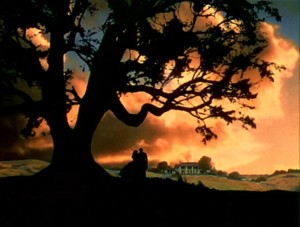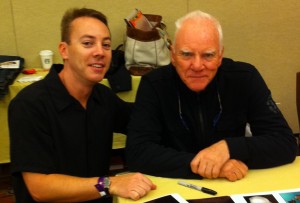Introduction
MeierMovies is devoted to the appreciation of the art of the cinema. It is an online rating and ranking system, in addition to a library of my reviews of motion pictures and analysis of film history. I, Cameron Meier, initially designed this site in 2011 to both rate (0-5 stars) and rank (200 greatest and 30 worst; and top 10 by genre) all the theatrically released films I have had the privilege to see. Since its inception, it has grown to include lists and reviews of theatrically released short films; features and shorts released on TV and the Web; and TV/Web shows — in addition to photography galleries and dozens of interviews with some of the industry’s most talented artists.
What defines greatness? (To skip this analysis and go straight to my reviews, click here, but I hope you’ll stick around for the conversation). When considering how to rate a movie, I turn first to simple quality, emotional impact and artistic vision. In other words, regardless of when the movie was made and what the budget was: Is it a good film? Next, one should show respect for movies that broke new ground, made a cultural impact and provided inspiration for the next generation of filmmakers, even if they may not hold up as well today. (Intolerance among early silent films and King Kong among early talkies come to mind, although the former film gets no better than 2 ½ stars here while the latter actually gets a slight thumbs-down, mostly for the atrocious acting, even when compared with many of its contemporaries.) Similarly, films are given some credit if they “did it first,” so to speak. So, in short, all appropriate criteria are considered: quality through the eye of a modern audience, influence, artistic contribution to society, superb craft, etc. By placing the emphasis primarily on quality while still considering those other factors, I hope I’ve managed to both successfully judge the true greatness of a film AND keep an open mind that many cinematic styles have existed (and, therefore, should still be embraced today) since Charles Tait shot The Story of the Kelly Gang in Australia, in 1906, introducing the world to what we describe today as “feature-length” movies.
I’ve tried to reject the temptation to give a movie a high rating just because society pressures one to do so. “Oh, don’t you just love Citizen Kane,” often comes from the mouths of the film critic, even though many of those critics couldn’t really tell you why they like it. Therefore, you may see some surprising ratings on this list. Billy Wilder and Quentin Tarantino certainly aren’t done any favors here, as I believe they are both overrated. Conversely, Charlie Chaplin and Stanley Kubrick, two of my favorite directors, do quite well. In rare instances, I’ve given a film a lower-than-expected rating because of simple poor taste. Yes, it’s often good to push the boundaries of normality and standards, especially in so-called “art films” (a term I hate because, after all, aren’t all films art?), but crossing those boundaries simply for shock value doesn’t get a movie any extra credit here. And also in extremely rare instances, I’ve penalized a movie if it wildly distorts the historical events it’s based on. Artistic license is one thing, but one can’t help deducting perhaps a half-star from Battleship Potemkin, for instance, for its blatantly false propaganda. (Its influence and artistry, especially for the 1920s, is unquestioned, however.)

Considering his talents as a motion picture pioneer, actor, director, writer, composer, editor and producer, Charlie Chaplin, shown here in City Lights, is my pick as the greatest film talent of all time.
The Star Rating section lists feature films by quality, starting with the top 200 of all time. The Yearly section lists movies chronologically, from 1912’s From the Manger to the Cross to today’s films, letting you know my selections for the REAL best pictures of those years. (Hint: The Academy usually got it wrong.) The A-Z page lists features alphabetically. Then there is the Director list, a selection of cinema’s most famous directors and their movies, ranked from best to worst. Another section lists the top 10 feature movies by Genre. You will also find a section comparing rating scales, in addition to my movie reviews. I also recommend exploring some truly original pages: my lists of short films (40 minutes or less), which you can find indexed on my Movie List page. Lastly, don’t miss my TV and Web Shows page.
Remember, if you don’t see a movie on this list, that doesn’t mean I’ve rejected it or passed judgment in any sense. It simply means I haven’t seen it, or haven’t seen it in a format or place that would allow me to rate it fairly. (By the way, I never pass off film-viewing responsibilities to anyone else. I see every movie myself.)
Motion pictures on my feature-film lists must be more than 40 minutes long (the minimum length of a feature according to the Academy of Motion Picture Arts and Sciences, the American Film Institute and the British Film Institute). All feature films, regardless of how they were released, are eligible for the lists, but films that never received a theatrical or major-festival release are noted either with the Hybrid or TV/Web/NT label.
If movies contain alternate versions, roadshow versions or directors’ cuts, the versions rated here are the original theatrical-release versions, unless otherwise noted, keeping in mind a film’s original version might also be its roadshow version. If movies were originally released to theaters in both 2-D and 3-D, the versions rated here are indicated in parentheses after the movie title, with the exception of those from the 1950s and 1960s, which are the 2-D versions, unless otherwise noted. (If I’ve seen both 2-D and 3-D versions, the version rated here is the better of the two, which, in almost all cases of recent films, is the version consistent with the way the movie was shot and intended to be seen, i.e., 2-D if shot in 2-D and 3-D if shot in 3-D.)

Because of its immense contribution to popular culture, its drama, its emotion, its groundbreaking use of color and cinematography, and its sheer quality in every department, even judging by contemporary standards, Gone with the Wind is my pick as the greatest film of all time. It also happens to be the highest-grossing film, when adjusted for inflation, and one of just four films to win 11 Academy Awards. It’s usually credited with 10, but it actually received 11 if you include the eight competitive awards and three special ones. (Image copyright Selznick/MGM)
Movies recorded in several languages (as was common in Europe in the 1960s and 1970s) do not carry the FL designation. The version rated here is the English dub. Movies recorded principally in one foreign language carry the FL designation. The version rated here is the original foreign-language version accompanied by English subtitles. French, Spanish, Italian and German films are alphabetized by their original, foreign-language titles. Films in all other languages are alphabetized by their closest English equivalents, when applicable.
Ratings are based on a 0-5 scale, with quarter-star increments for features, half-star increments for TV and web shows, and only full stars for short films. If a feature film receives 2 ¾ stars or more, that amounts to a thumbs-up rating. If a movie receives 2 ½ stars or fewer, that’s a thumbs-down. However, if a film is rated from 2 to 3 stars (the average range), take my thumbs-up and thumbs-down ratings with a grain of salt, as those judgments are somewhat subject to my own viewing experience, personal background and taste, which may be vastly different from your own. I’ve simply done the best I can to predict the reaction of the typical, somewhat intelligent, adult movie-goer, keeping in mind that adults should always try to embrace their inner child and sense of wonder, especially when viewing an animated film.
Lastly, don’t forget to check out the Key, which will guide you through my colors and symbols.
So now that we’ve covered all the technical stuff, sit back and enjoy the site! And feel free to share your constructive feedback by commenting on one of my blogs or by e-mailing me at MeierMovies@aol.com.
